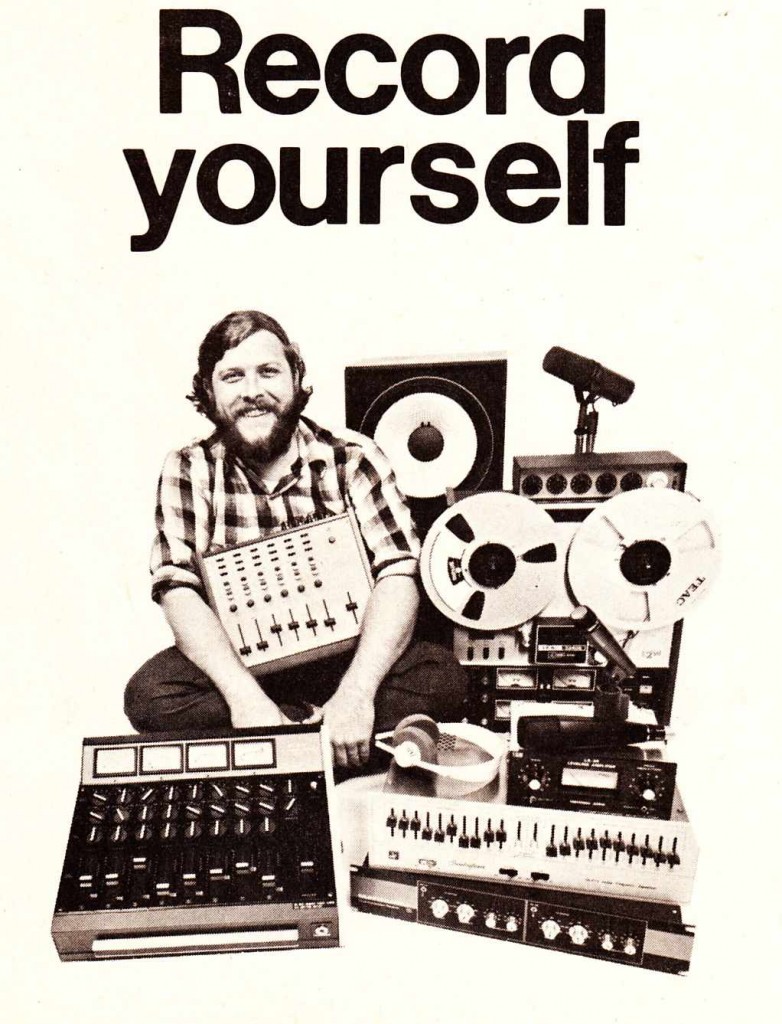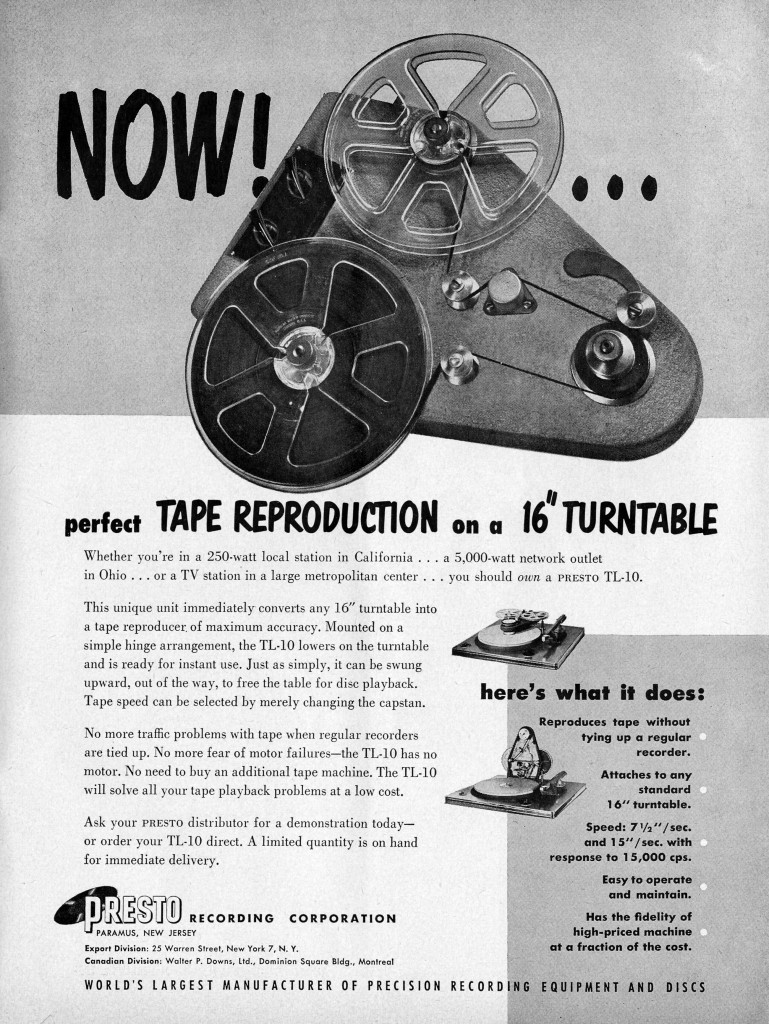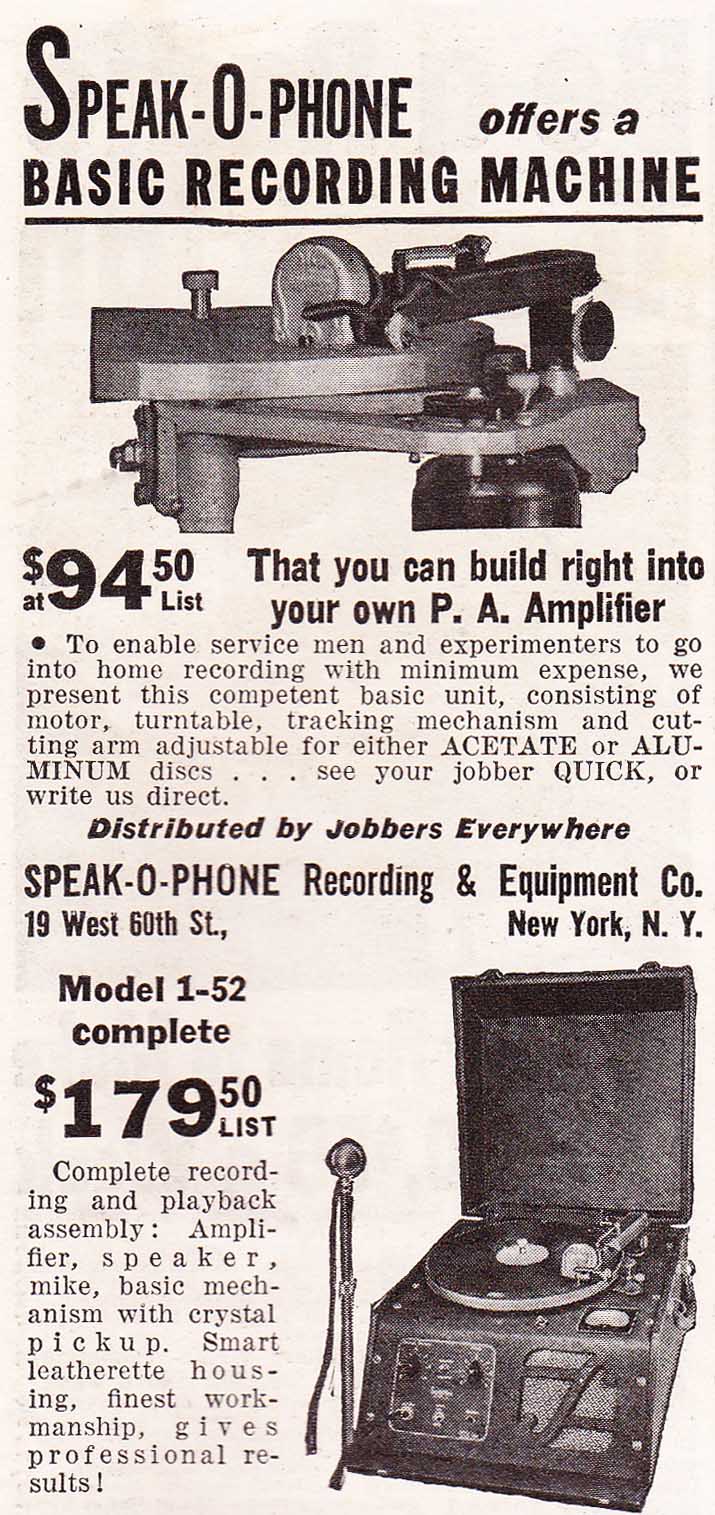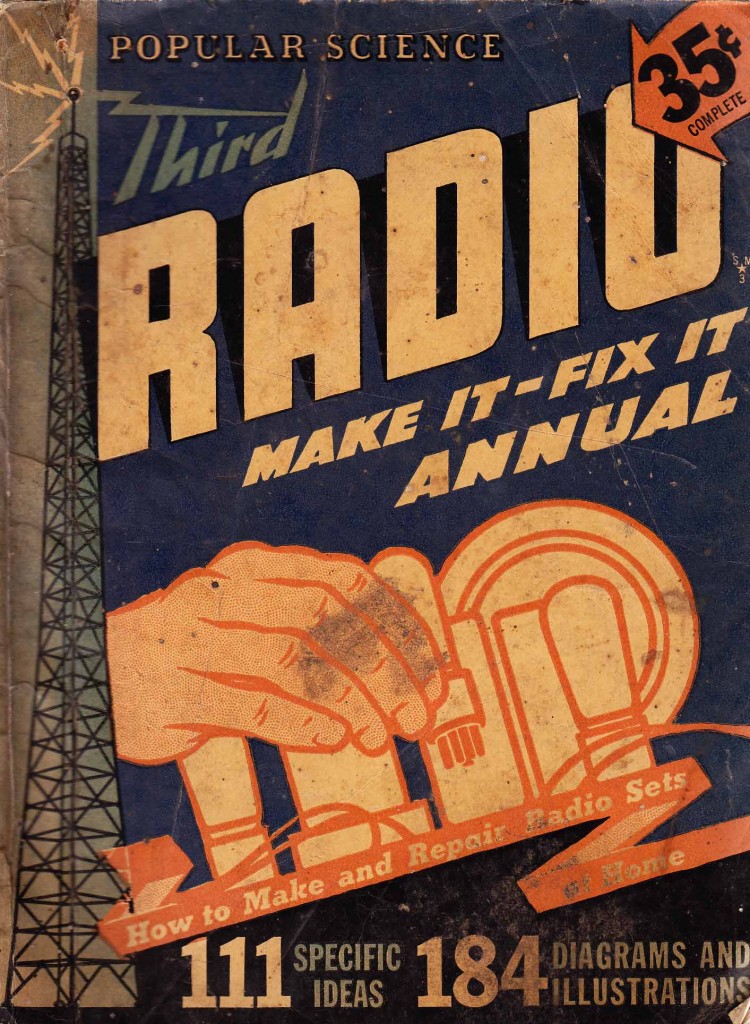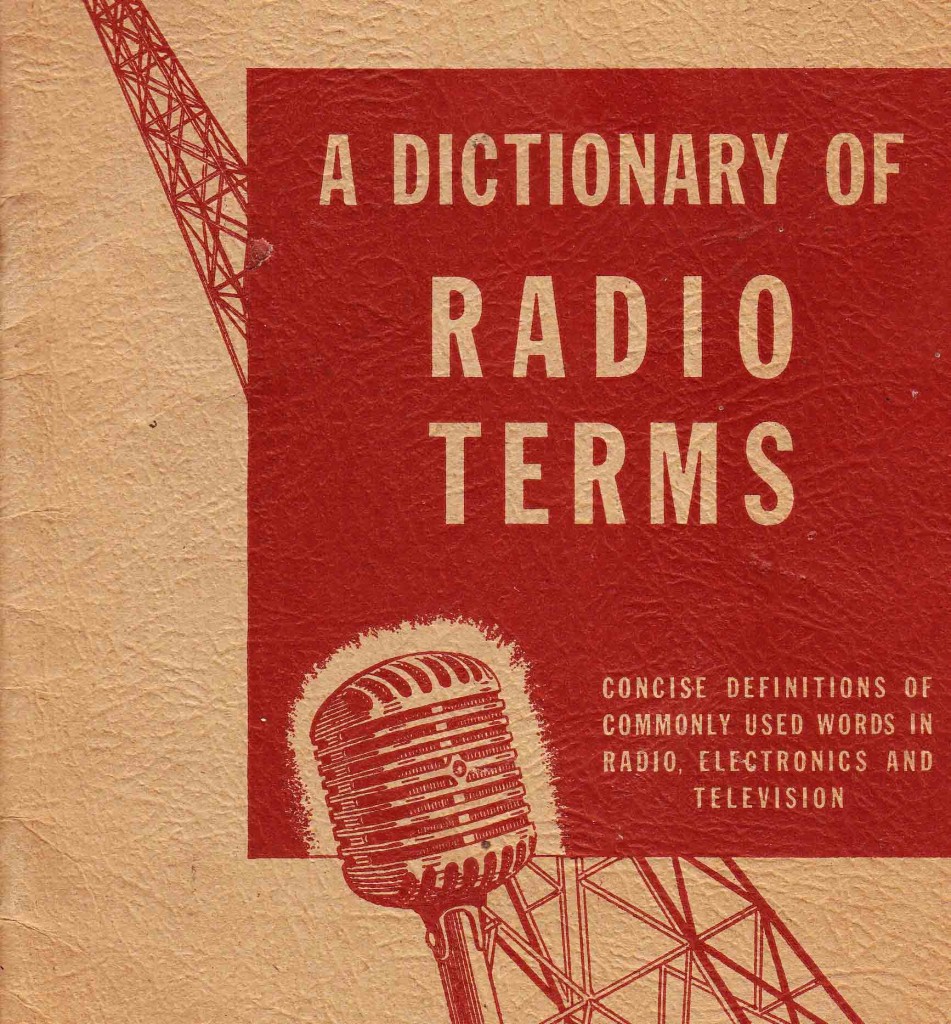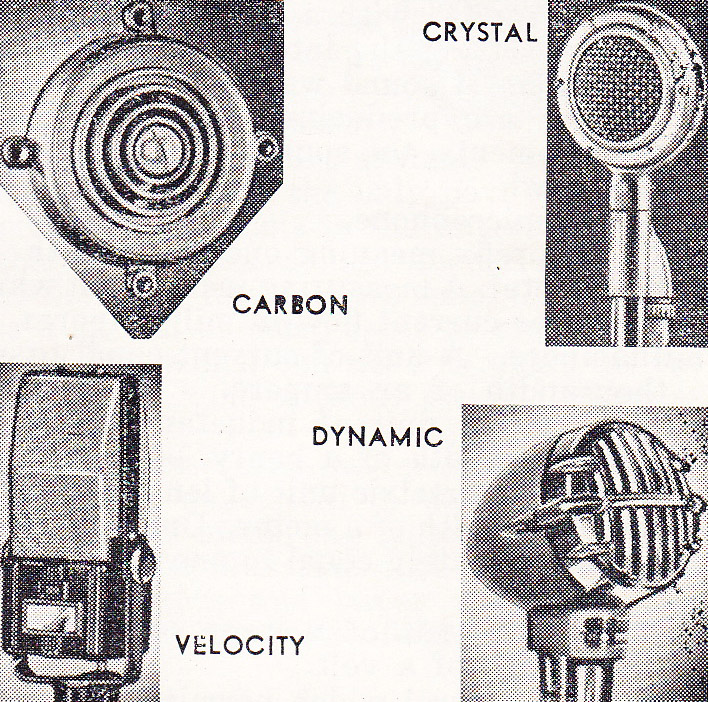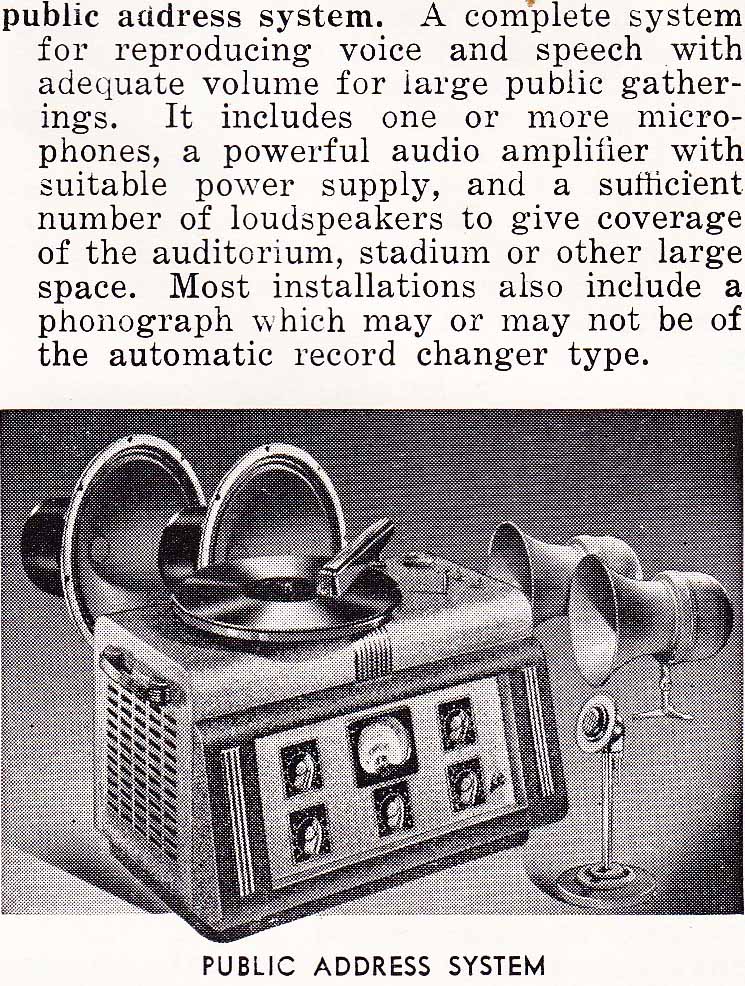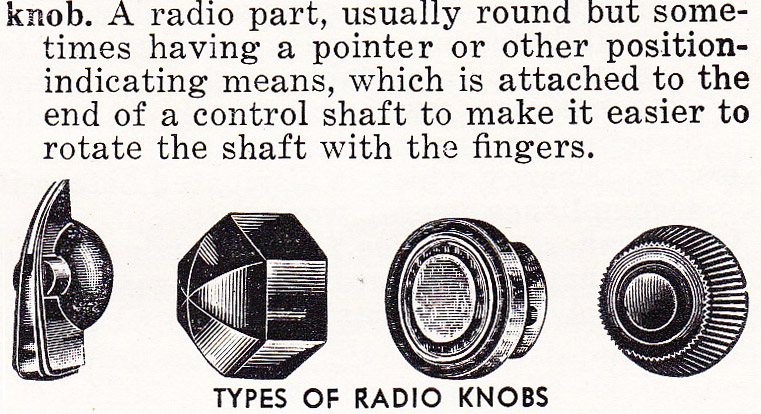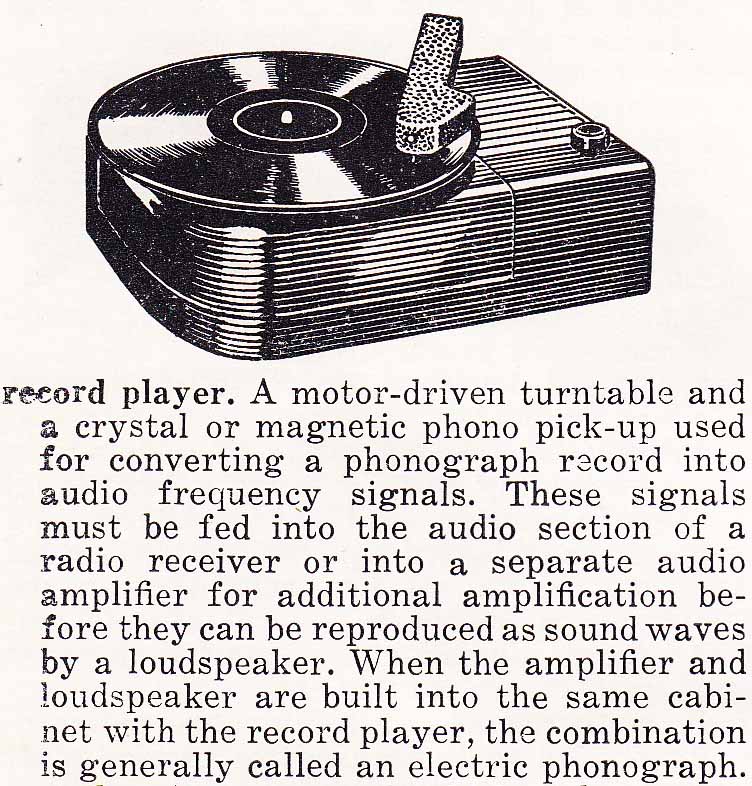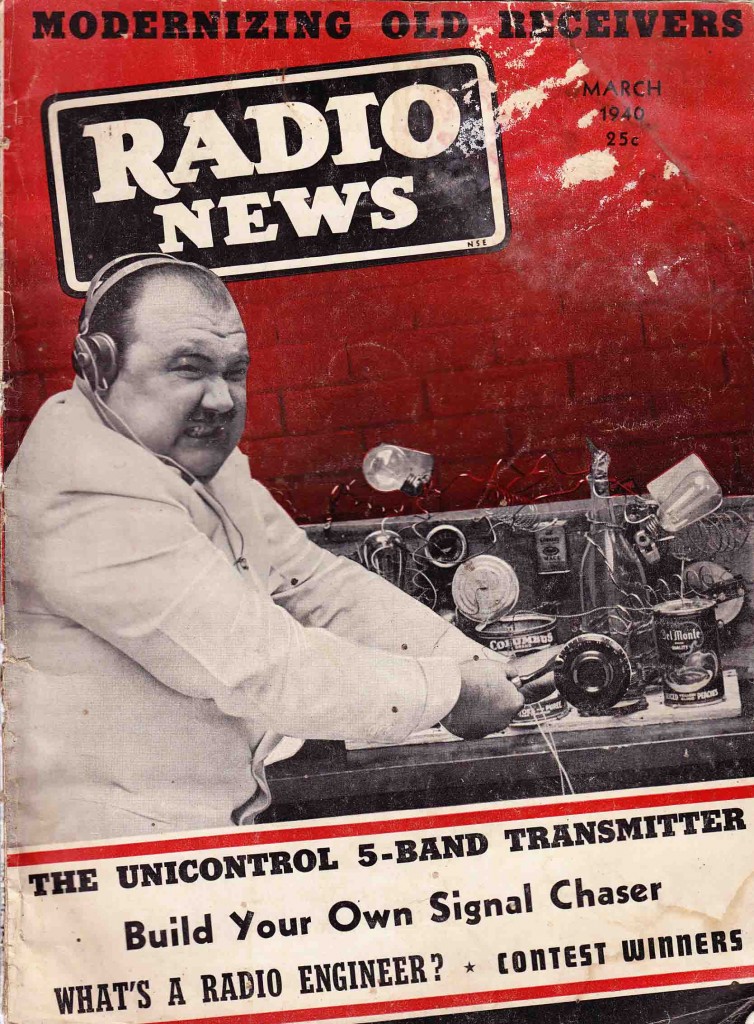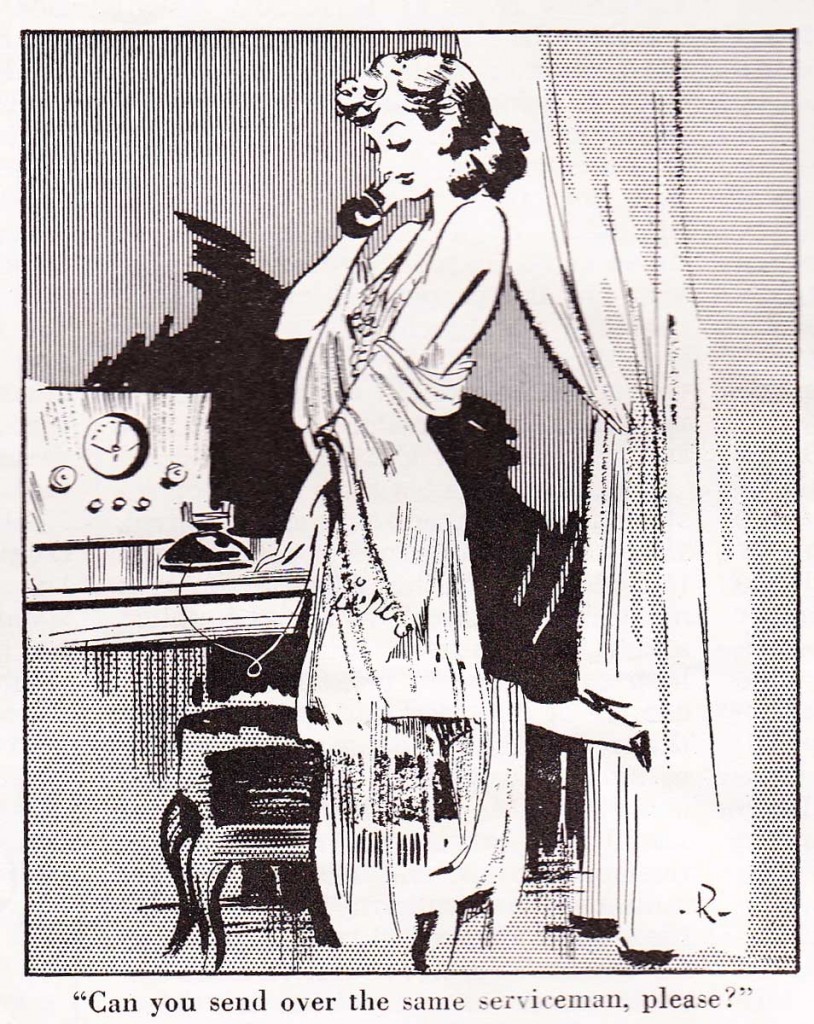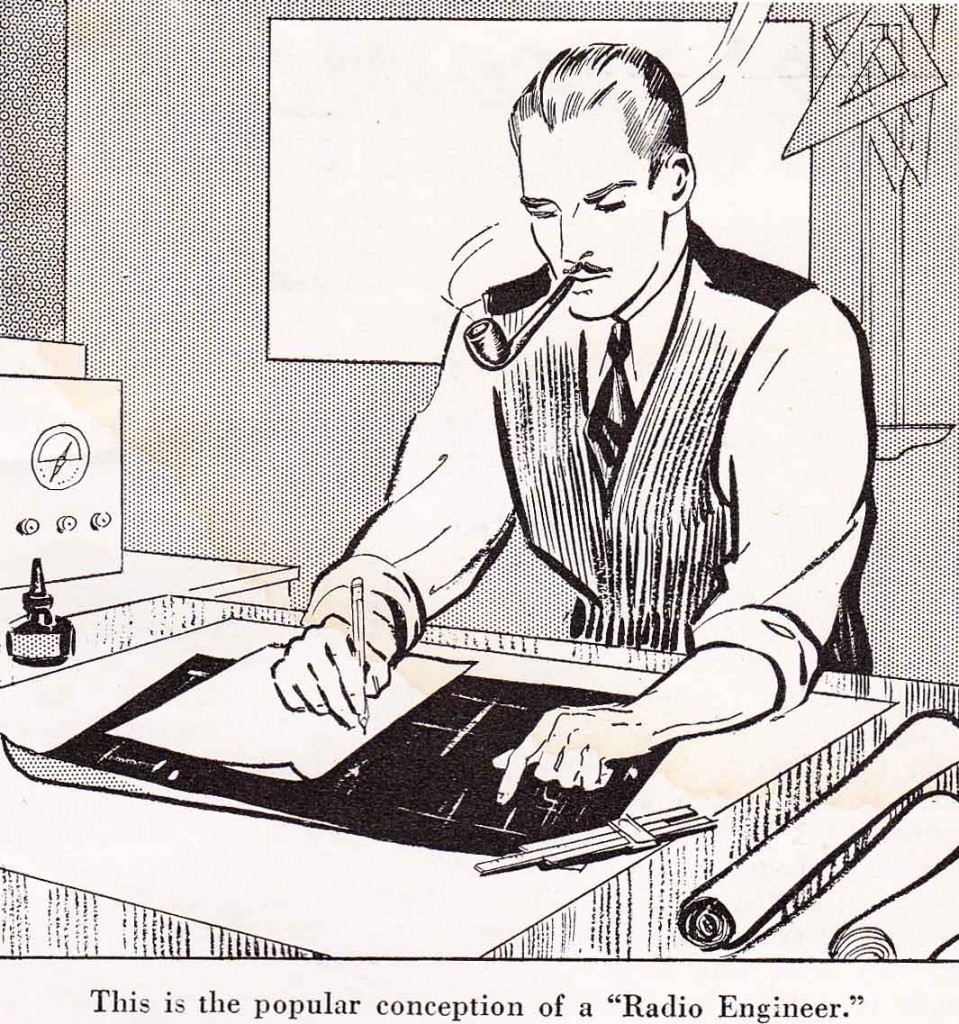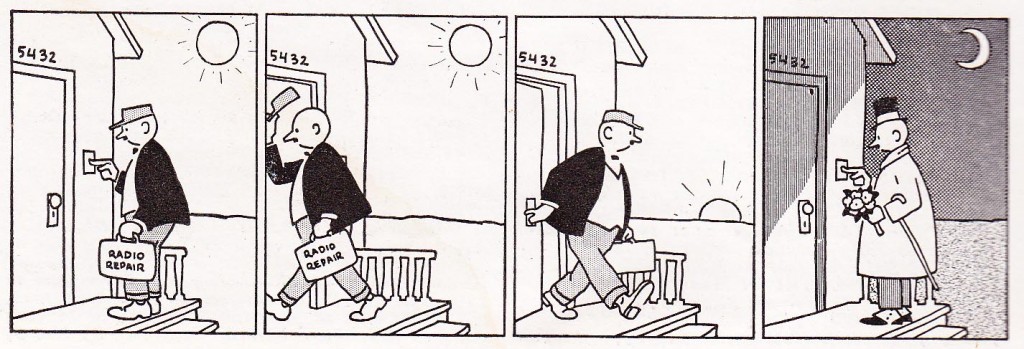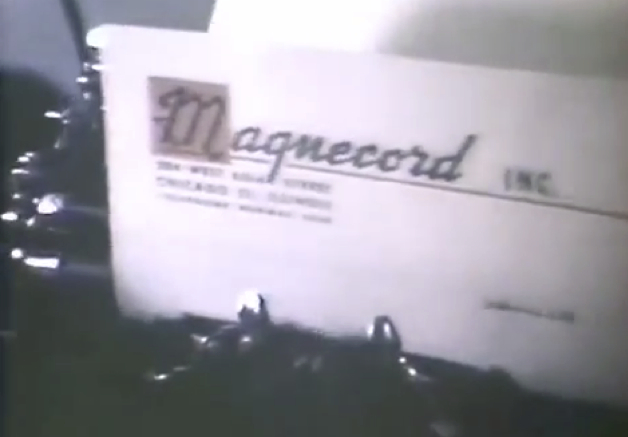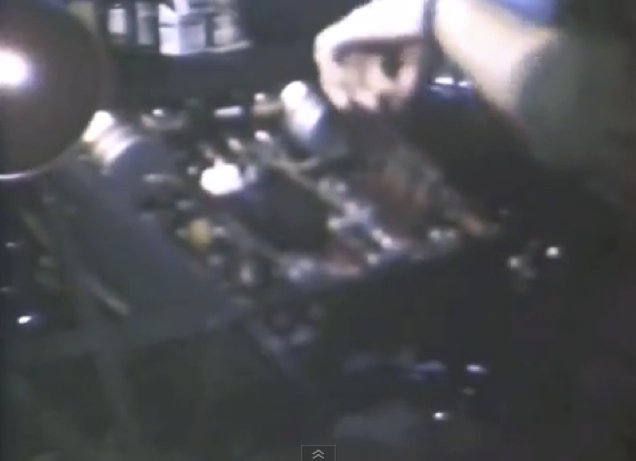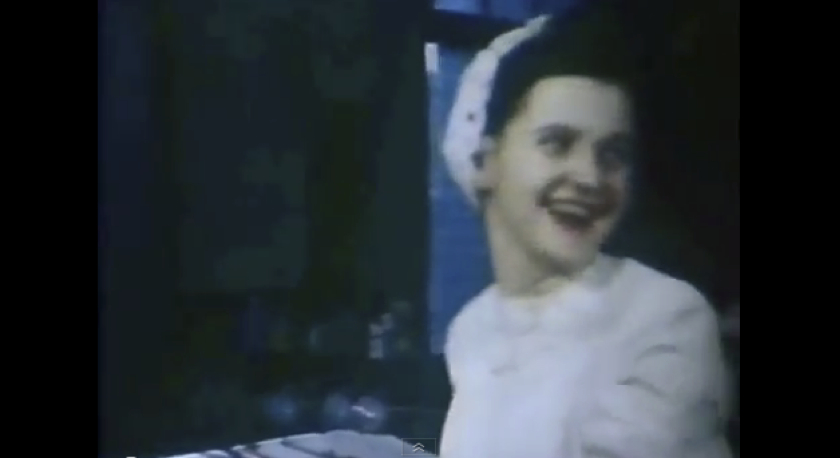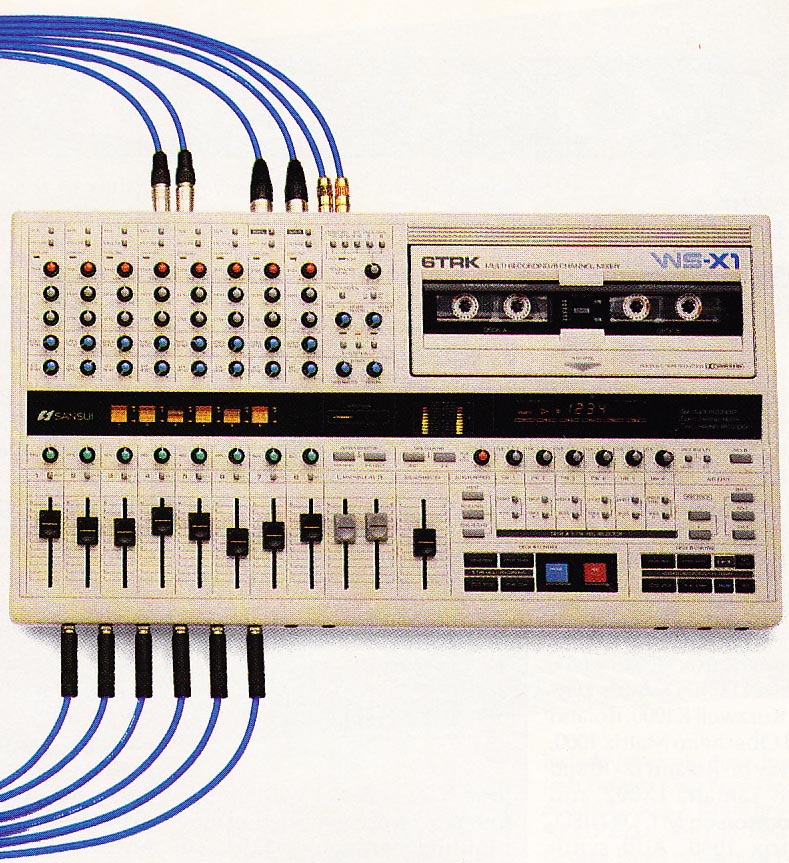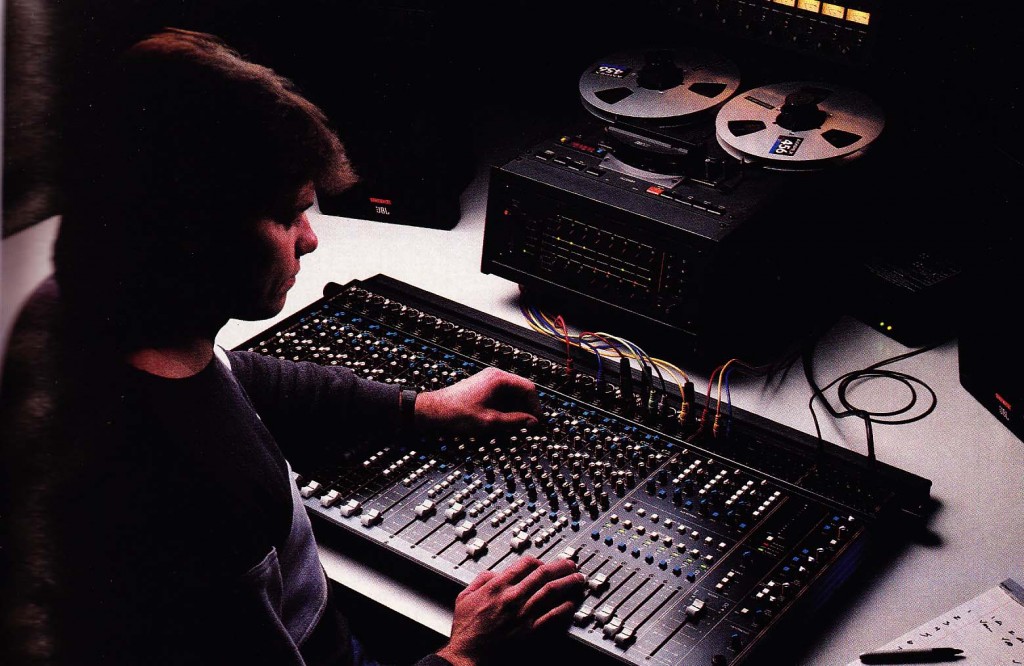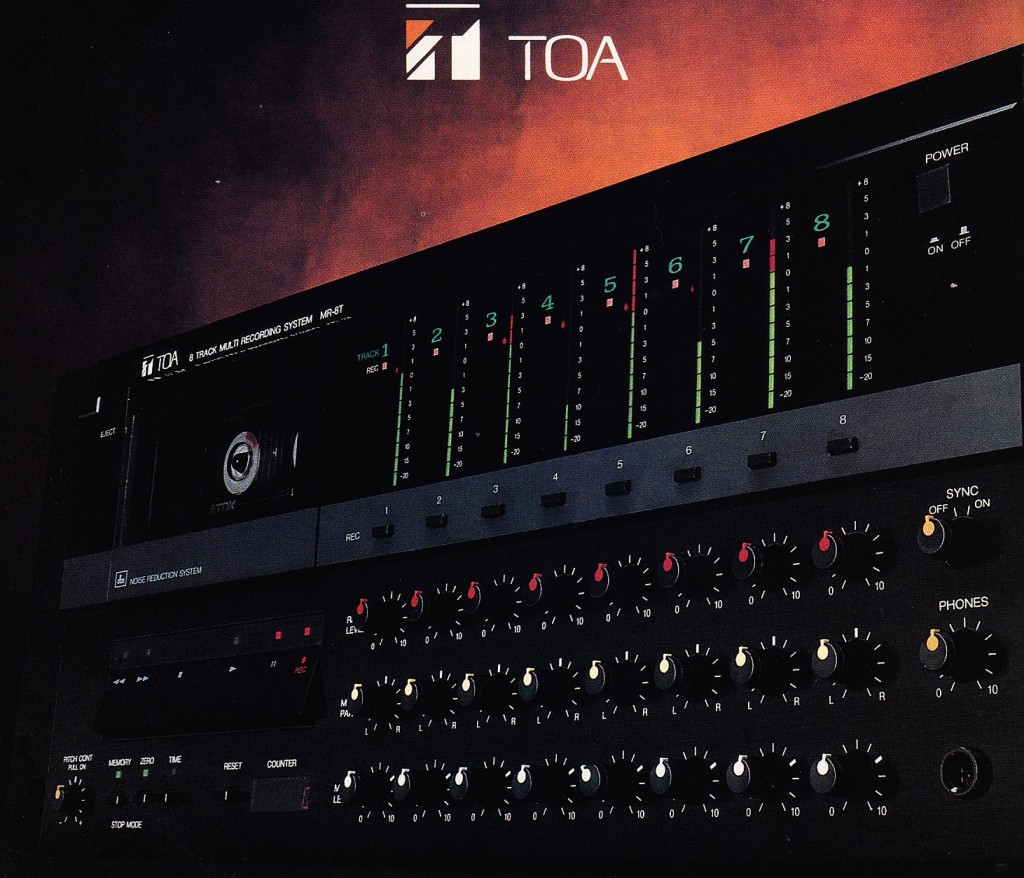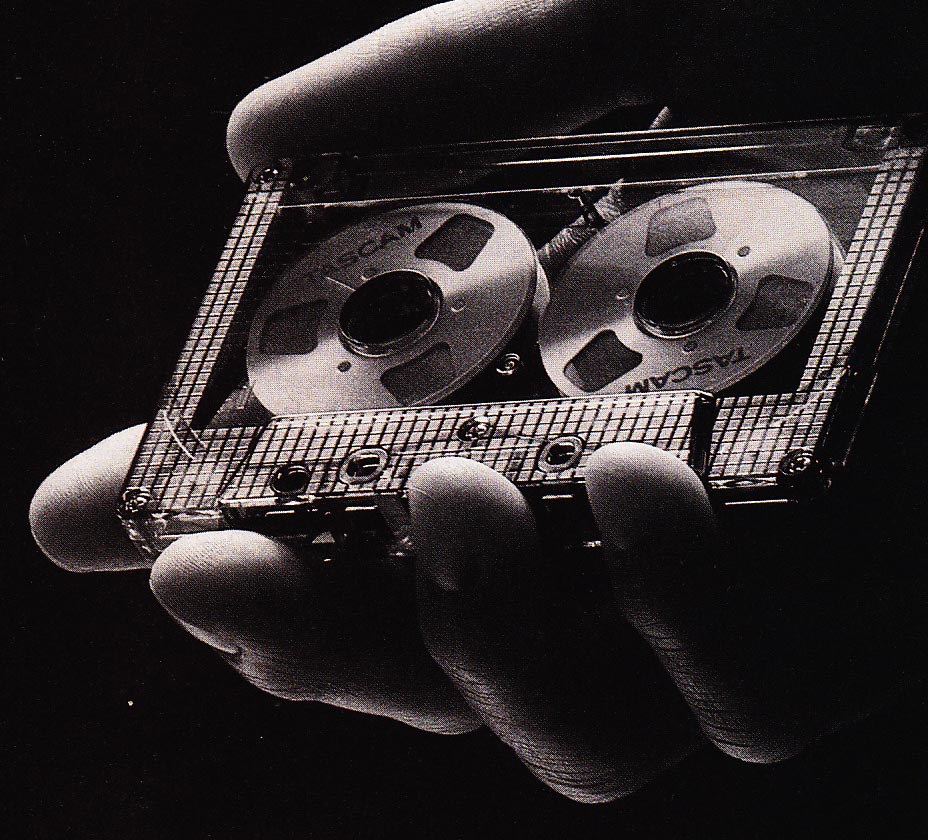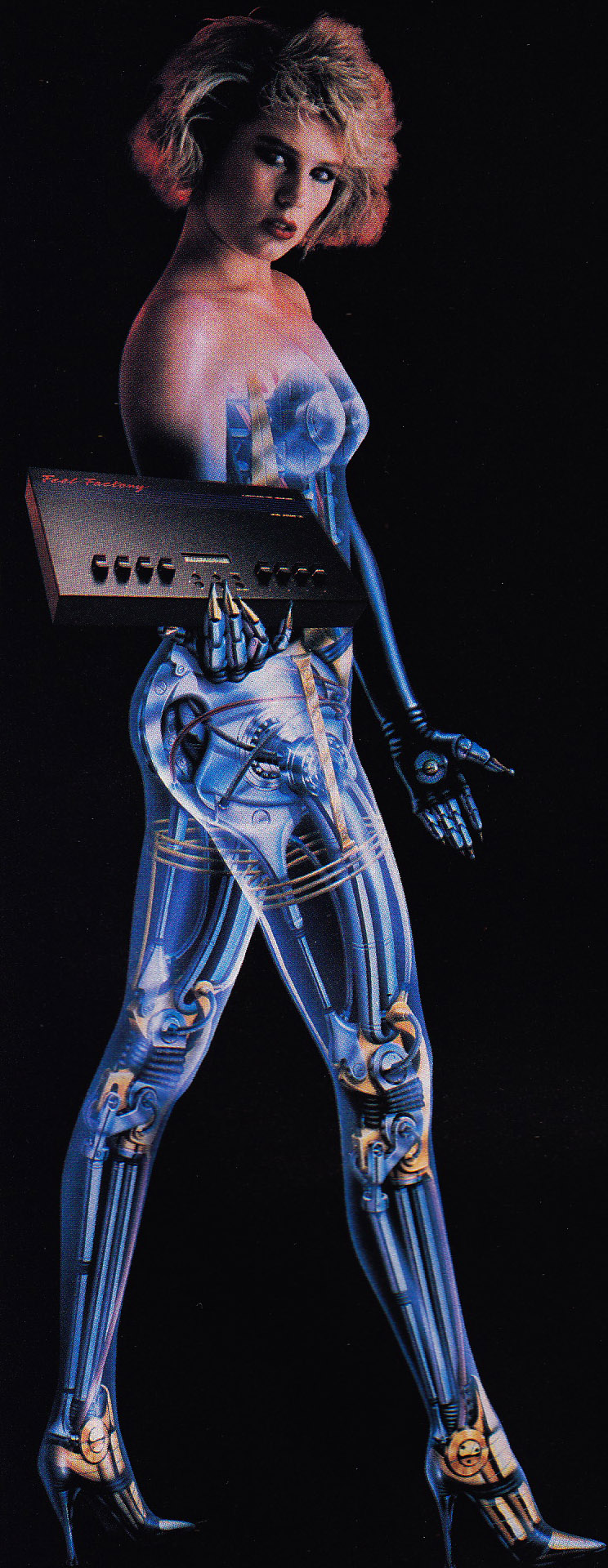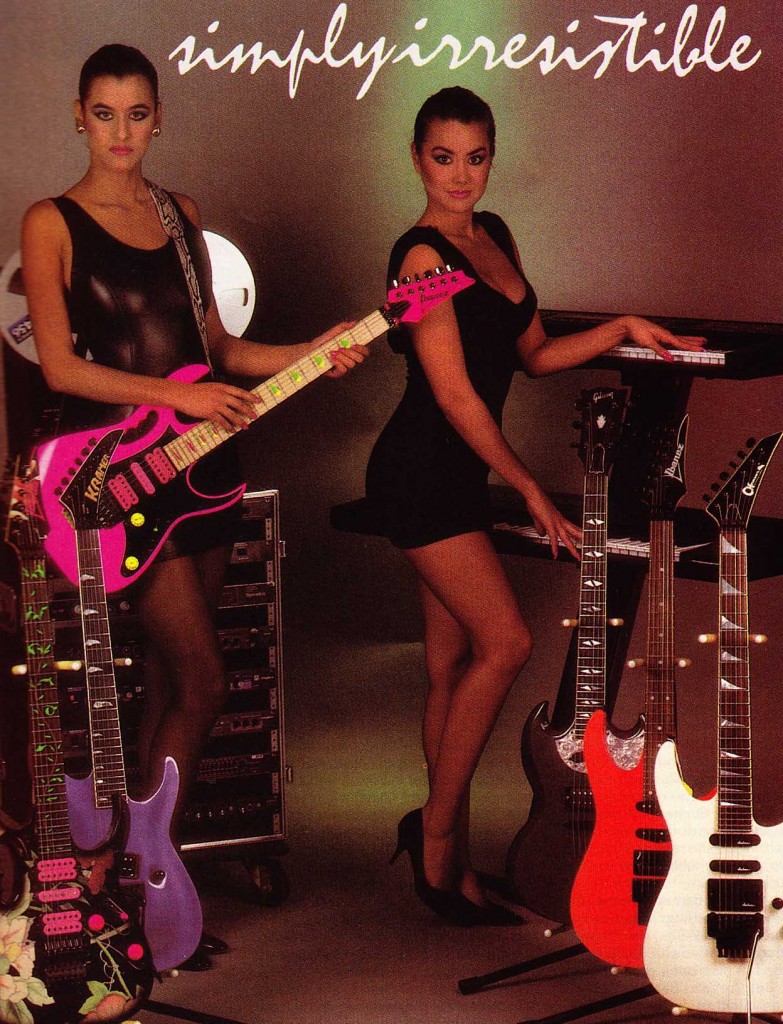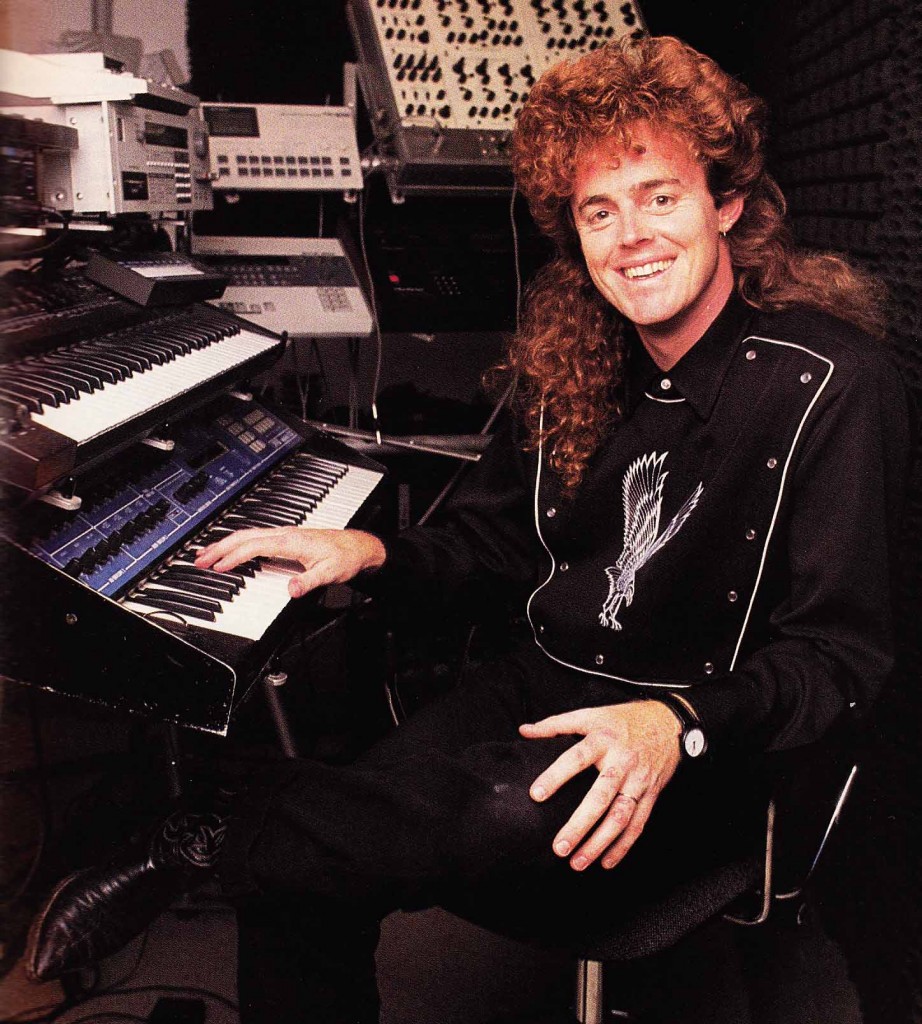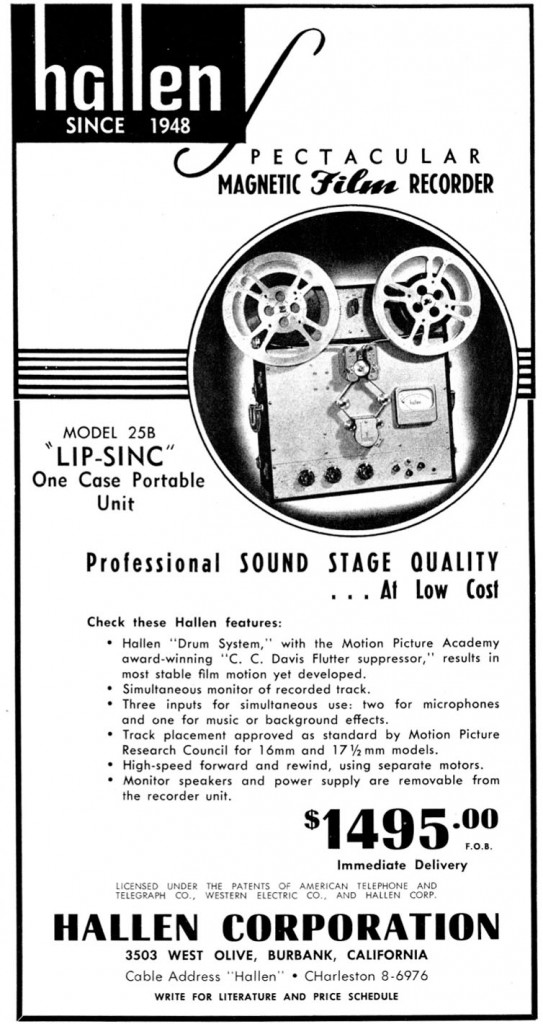 The Hallen Corp magnetic film-recorder circa 1953. A bargain at $13,000! (adjusted for inflation)
The Hallen Corp magnetic film-recorder circa 1953. A bargain at $13,000! (adjusted for inflation)
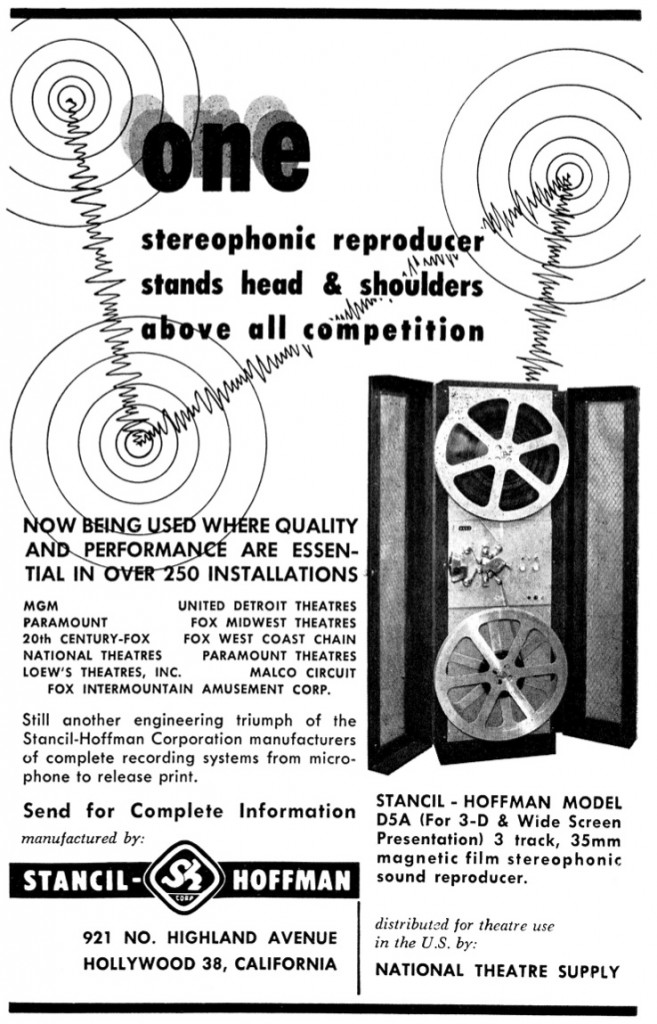 The Stancil-Hoffman magnetic-film recorder circa 1953.
The Stancil-Hoffman magnetic-film recorder circa 1953.
Everyone (that reads this website…) is aware that magnetic wire recording gave way to magnetic tape recording, which gave way to magnetic discs, which are currently being slowly phased-out in favor of motionless ‘solid-state’ memory (via i-am-typing-this-on-maybe-my-last-macbook-that-will-have-a-spinning-harddrive). Progress is rarely purely sequential though, and just as there was the short-lived metal-tape recorder of the 1930s (see this previous post for info), the Ampex/Magnecord dominated early magnetic-tape era was challenged (for fidelity, at least) by magnetic film recorders. Aside from their heavy endorsement from Fine Recording, I don’t know much about these machines. Are any still in use? What made them superior to magnetic tape, and why? Let us know…
